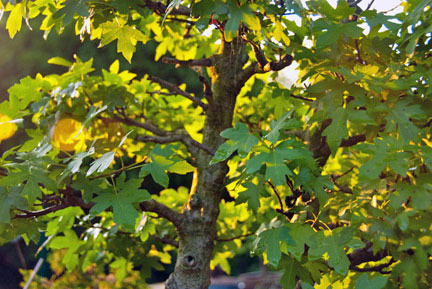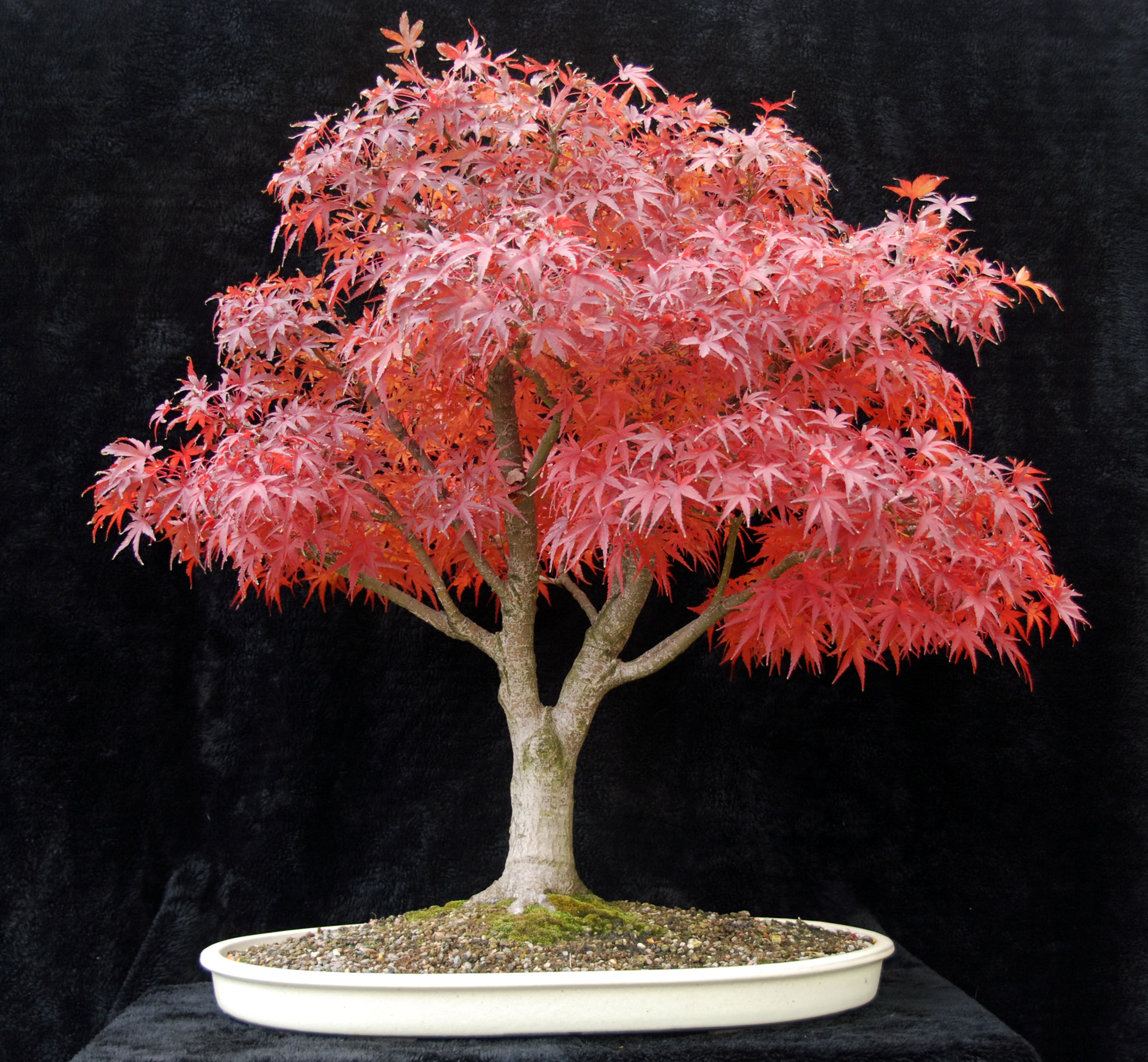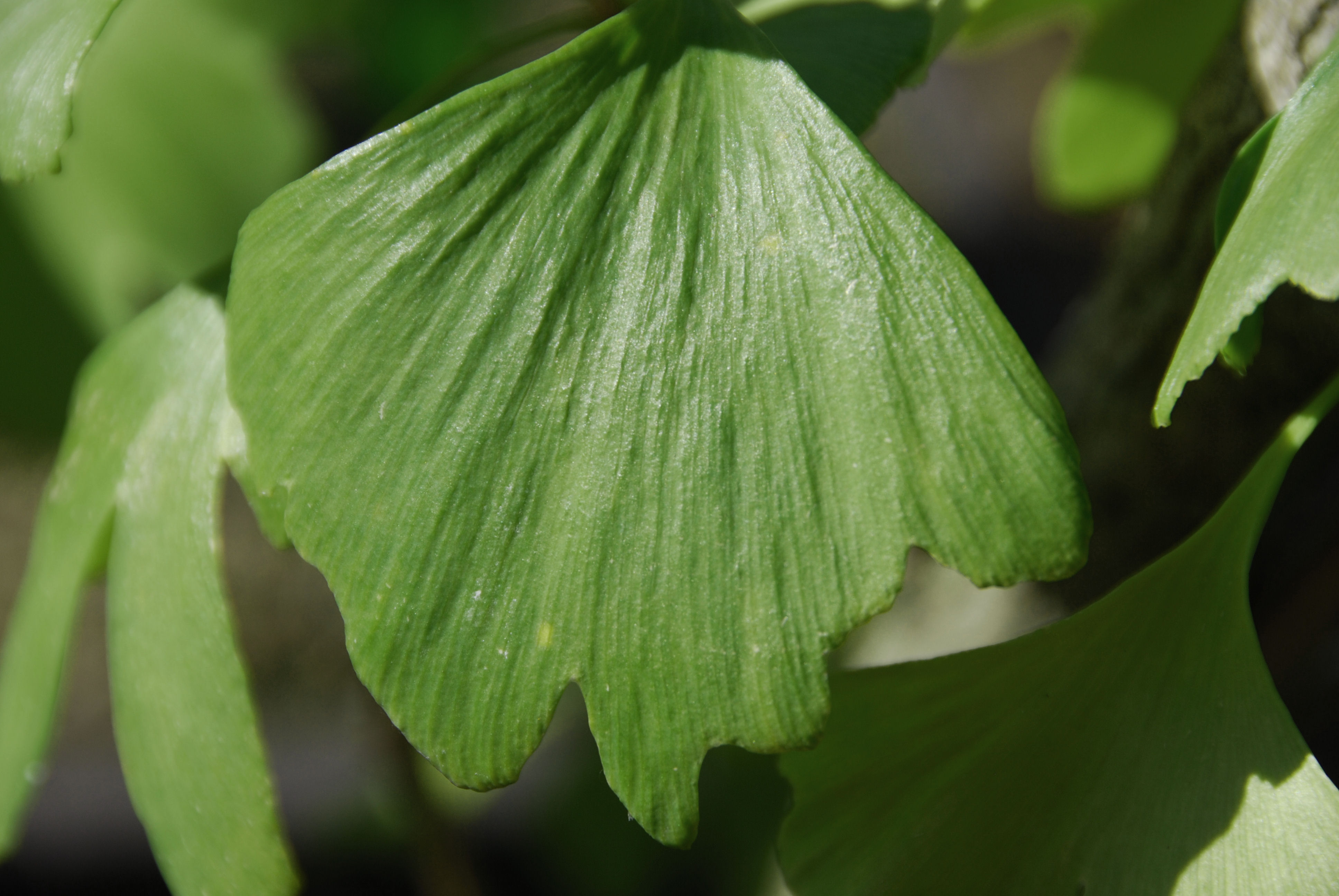Quiet Crow Bonsai
A Collection of Stellar Bonsai Musings

Liquid Amber
Liquidambar styraciflua Sweet gum is a low-maintenance deciduous tree typically found in moist low woods and along streams. The common name of sweet gum refers to an aromatic balsam or gum that exudes from wounds to the tree. In further reference to this gum, the genus name basically means liquid amber and the specific epithet means flowing storax.This tree was offered as a workshop with Ted Matson at the Golden State Convention in Woodland Hills, CA on November 2, 2001.
View Project

White Bark Birch
Betula papyrifera Paper birch is best grown in medium to wet, well-drained sandy or rocky loams in part shade. It is best when it receives some afternoon shade. It needs consistently moist soils keep the root zones cool and moist. It needs little pruning, but if necessary, prune during the dormant season.
This tree was collected in upper Michigan in an overgrown golf course. In 1995, we put a tourniquet around taproot to force development of roots above it. This year is the first year for its new front.... Check back to see all updates. View Project

Pygmy Maple
This is an outstanding miniature maple; a seedling selection from Sharp Nursery, Boring, Oregon. Small, regular palmatum leaves on a compact, densely branched, rounded shrub turning a deep red in fall. Tiny palmate leaves on a short, densely structured tree with naturally rounded crown. Soft green 1½ inch star-shaped leaves turn brilliant red in fall. A tendency to leaf out early makes these maples susceptible to spring frosts.
This tree was purchased as nursery stock around 1994 by Jack D. I purchased this tree after it fell over and broke the apex off. Since purchasing this tree in 2007, several instructors have helped me in developing this tree. View Project

Midget Crabable or Kaido Crabapple
The Malus × micromalus was aquired as nursery stock in 2008 about 14 years old at that time and has been in training since then. A deciduous Shrub growing to 13 ft by 9 ft, it is hardy to zone 4 and is not frost tender. The flowers are hermaphrodite (have both male and female organs) and are pollinated by Insects. This tree was acquired as nursery stock at a workshop with internationally known and recognized for her excellence in the art form, Kathy Shaner, was designed and styled. In 2009 it was potted into a bonsai training pot from the nursery pot. Since then it has been repotted every other year, wired to ensure movement in secondary branches, pruned and refined every year. View Project

San Jose Juniper
Juniperus squamata ‘San Jose' was aquired in 2002 about 7 years old at the time. This tree was an ABS 2002 convention workshop tree with Cheryl Manning. Cheryl has been training this tree for six years. The nursery stock was planted in the ground for three years to gain size. For the past three years they've been in pots to develop character. In addition to the development of the trunk and branches, the root system has been trimmed so that the trees will be able to be potted in an appropriate pot. In 2005 I potted it into its show pot and began working with Ted Matson. First step is to reduce all foliage to about 1 inch (or ¾ inch earlier in the year) to produce even balance. Ted explained that this tree is showing a lot of mature buds (scale rather than needles). He suggested trying to convert tree to this mature foliage, by pinching the mature foliage lightly to keep the energy flow and allow it to increase. To help balance the top of the tree, reduce top portion by 5% so the bottom can catch up. I had difficulty wiring this tree and did not complete the wiring of the upper half. In the future I will need to watch placement of branches. No right angles, more triangular or angled then flare out. All should flow with the branch to the tip. View Project

Collected Ginko
My ginkos were collected in early spring 2010 when the Milwaukee Bonsai Society organized a collecting dig in a Bayview neighborhood. The house where the collecting took place, was purchased in 1941 by Joseph and Dorothea Halser. A 1970 story in The Milwaukee Journal quotes Dorothy as saying that the first trees on this property were a gift to the previous owner around 1900 from a U.S. ambassador to China. In 2009, investigators representing the University of Wisconsin Extension and the state Department of Natural Resources have established that the two biggest trees on the property are the 13th and 14th largest in the state of Wisconsin.
Quiet Crow Bonsai site is a collection of designs and techniques for bonsai students and enthusiest.
You can view pictures, projects and philosophy as I share my experience and love of bonsai.
The site teaches you to use your creativity to take advantage of my experience to create your bonsai dreams. It teaches you how you can grow your own club or organization so it thrives. View Articles
And as if that’s not enough, you can see me designing and sharing my experience at clubs around the state at Milwaukee Bonsai Socciety